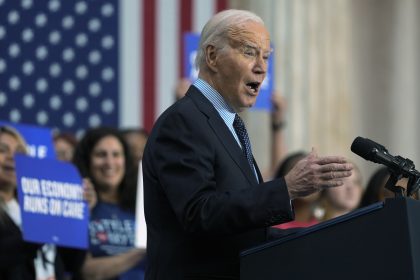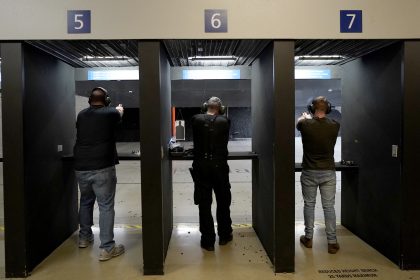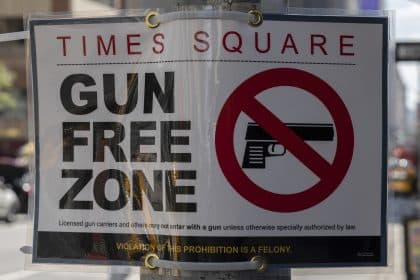Supreme Court Agrees to Decide if Bump Stocks Can Be Banned

WASHINGTON — The Supreme Court agreed this month to hear a case that will decide whether a Justice Department ban on gun bump stocks will withstand a constitutional challenge.
Bump stocks are gun attachments that allow semi-automatic weapons to fire rapidly like machine guns.
The Justice Department’s Bureau of Alcohol, Tobacco, Firearms and Explosives banned them after a 2017 mass shooting in which a gunman killed 59 people by firing into a crowd from a Las Vegas, Nevada, hotel window using assault rifles modified with bump stocks. The retired postal worker fired more than 1,000 rounds in 11 minutes into a crowd of 22,000 music fans.
The ban led to court challenges by gun rights advocates claiming Second Amendment rights.
A key issue is whether guns with bump stock attachments are machine guns. There is no dispute that machine guns are weapons of mass destruction that are not allowed under the Second Amendment’s right to bear arms for self-defense.
“Guns equipped with bump stocks can cause massive devastation. These are devices that fire like machine guns and kill like machine guns, so it’s a no-brainer that they should be regulated like machine guns,” Nick Suplina, vice president for law and policy at the gun control advocacy group Everytown for Gun Safety, told The Well News.
The National Firearms Act defines a machine gun as “any weapon which shoots, is designed to shoot, or can be readily restored to shoot, automatically more than one shot, without manual reloading, by a single function of the trigger.”
Plaintiffs who challenge the Justice Department regulation say guns modified with bump stocks are different than machine guns.
“The [Bureau of Alcohol, Tobacco, Firearms and Explosives’] knee jerk ban on bump stocks via executive action was another stark example of unconstitutional legislating by an agency,” Erich Pratt, vice president of the gun rights group Gun Owners of America, told The Well News. “Congress never intended to ban bump stocks, and when an agency unilaterally bans a simple device that can be easily replicated with something as common as a belt loop, the courts must intervene.”
Bump stocks harness the recoil energy of a semi-automatic firearm to reset the trigger with each shot, thereby allowing the gun to continue “firing without additional physical manipulation of the trigger by the shooter,” according to the Bureau of Alcohol, Tobacco, Firearms and Explosives.
However, the shooter must keep forward pressure on the gun with the non-shooting hand while also pushing on the trigger.
That small distinction led the U.S. Court of Appeals for the District of Columbia Circuit to say any difference from a machine gun was too small to interpret a bump stock any other way.
The court’s opinion, written by Judge Robert Wilkins, said that “under the best interpretation of the statute, a bump stock is a self-regulating mechanism that allows a shooter to shoot more than one shot through a single pull of the trigger. As such, it is a machine gun under the National Firearms Act and Gun Control Act.”
The U.S. 5th Circuit disagreed, writing in a January ruling, “The definition of ‘machine gun’ as set forth in the National Firearms Act and Gun Control Act does not apply to bump stocks.”
Congress would have to change federal law before bump stocks could be banned, the 5th Circuit’s 13-3 ruling said.
A contributing issue is whether the Justice Department exceeded its authority with the ban, which took effect in 2019.
A Supreme Court decision is expected by early summer in Garland v. Cargill, 22-976.
You can reach us at [email protected] and follow us on Facebook and Twitter
























